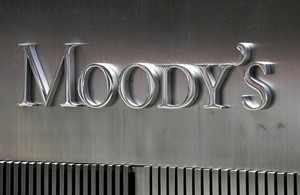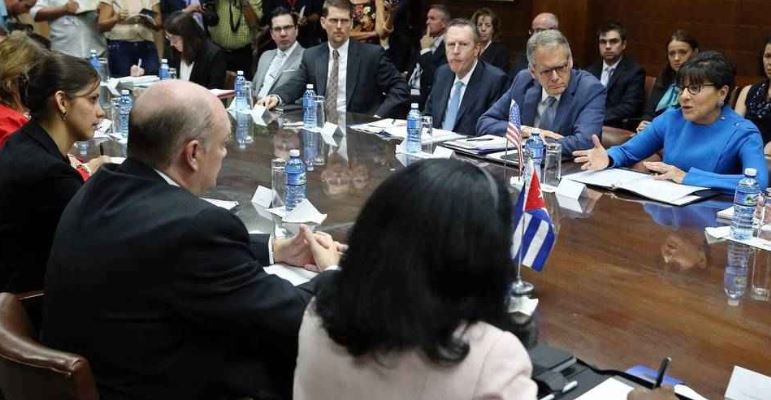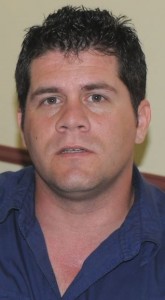
The Cuban economy in 2015
HAVANA — The economic data for the end of 2015 — scant as they were — left a bittersweet taste in Cubans’ mouths. There was a mixture of good and not-so-good news. Among the former, we find a series of events, some of which could be described as historic.
Following the announcements of Dec. 17, 2014, in January and September the U.S. president introduced modifications to the policy of sanctions, aimed at expanding the possibilities of commerce, investment, financial ties and travel.
In May, the U.S. removed Cuba from the list of states that sponsor terrorism (which voids some financial restrictions), and improved Cuba’s standing on the report on human trafficking. Both countries reopened embassies during the summer and in December signed accords for the reestablishment of direct mail and commercial flights.
While direct economic relations remain at very discreet levels, this dynamics positively affected the number of U.S. visitors (an increase close to 60 percent) and the flow of capital, in the form of remittances and other payments — although part of these are not recorded in the balance of payments.
 Also, the indirect effect on third parties in tourism, finances and investments must have been notable. For example, on Dec. 11, Moody’s Investors Service, the only major bond-credit-rating agency that periodically evaluates Cuba’s sovereign debt, announced that it maintained the rating it issued in April 2014, Caa2,(*) but changed the forecast from stable to positive, opening the possibility that, in the near future, the rating could be improved.
Also, the indirect effect on third parties in tourism, finances and investments must have been notable. For example, on Dec. 11, Moody’s Investors Service, the only major bond-credit-rating agency that periodically evaluates Cuba’s sovereign debt, announced that it maintained the rating it issued in April 2014, Caa2,(*) but changed the forecast from stable to positive, opening the possibility that, in the near future, the rating could be improved.
Cuba continued a successful renegotiation of its longstanding foreign debt, reaching very advantageous accords with the Paris Club and the government of Japan.
This practically concludes the amortization of the largest old debts and should provide a more sustainable trajectory to Cuba’s foreign finances. However, it represents an additional outlay of resources, short-range.
The first contracts with foreign companies at the Mariel Special Development Zone were announced at the Havana Trade Fair, and the Portfolio of Investment Opportunities for foreign capital was updated.
Some of these events have no impact in the year-end results but they do open some opportunities toward the future.
Preliminary data foretell a 4 percent growth in the Gross Domestic Product (GDP). This will be achieved with a more balanced performance at the sectorial level. As announced, all sectors show increases in their activities, although some (agriculture and sugar) did not grow at the expected rate.
Another positive note is the upkeep of the internal macroeconomic balance, beginning with a budget deficit under control and price stability. This last element should be taken cautiously because in segments such as foods the dynamics of prices has been on the ascent. The particular characteristics of Cuba’s Consumer Price Index also influence price stability.

In particular, international tourism benefited from the new favorable juncture between the U.S. and Cuba, with an impact on visitors from other countries. All the important markets grow at two-digit rates. According to figures in the media, the increase of visitors from the United States — about 60 percent — is appreciable.
This would make the U.S. the fourth most important market, ahead of France and just behind Germany. Of course, if the visits by Cuban-Americans are added, the U.S. has been for a while the second largest originator of visitors. This fact highlights the enormous potential in that market.
During 2015, restrictions on travel to Cuba by U.S. citizens were relaxed and direct flights between the two countries were expanded by adding new destinations. By November, ten U.S. cities — Miami, Tampa, New York, Los Angeles, Chicago, Baltimore, Houston, Ft. Lauderdale, Fort Myers, Orlando — had direct connections to such Cuban destinations as Havana, Santa Clara, Cienfuegos, Camagüey, Holguín and Santiago de Cuba. This sector should perform well in 2016.
Among the less encouraging aspects, we find that economic growth will decline to 2 percent in 2016. This should be understood as the combination of negative tendencies in the domestic economy and the international scene.
Domestically, investments remain at low levels, with apparently low efficiency. In other words, very few and poorly utilized. In addition, exports are beginning to suffer the effects of a deterioration of the external context, particularly the situation in Venezuela, along with the by-now-legendary stagnation of real-property sales.
These results and the predictions for 2016 mean that, since 2011, the economy has expanded about 2.5 percent on the average every year, a figure far from the needs for development in a country like Cuba. Economic growth is also below the figures projected by the government itself for the past five years, specifically, half of the projection.
The Minister of the Economy mentioned that there remains a perception that the increase did not significantly impact the lives of most Cubans. He is right and there’s a good reason for it.
On one hand, growth is achieved in an unequal society, so some segments barely notice it in their personal income. Real private consumption does not increase at a pace sufficient to change this condition.
On the other hand, three areas that are especially sensitive show an unfavorable evolution. In the first place, housing. The housing deficit continues to grow because the construction of new units and the repair or expansion of the existing units do not meet the demand.
In second place, public transportation. Beyond the plans announced and put into practice, mass transportation does not meet the demand and the situation is particularly acute in the capital, for obvious reasons.
Finally, the access to food. We should remember that the transformations in agriculture began some time ago, in 2007. The figures say something and the reality is even more revealing. Progress has been extremely modest: between 2005 and 2014, the production of legumes dropped, while the production of fruits rose very slightly.
Better results were obtained with cereals and eggs, but we must take into account that nine years have elapsed, and the prices have risen at impressive rates. The vaunted effect of “unfair competition” from restaurants and cafeterias is an element that only confirms a structural characteristic of our economy: the supply is insufficient to cover a solvent demand — and we’re not talking about a varied, stable and high-quality supply.It is true that the economy expands amid a deceleration of the region and the world economy as a whole, which could translate into a modest increase in trade in the near future — bad news for the Cuban economy.

Nevertheless, this effect could be partially offset if the changes in U.S. policy materialize and the embargo is lifted, opening the world’s largest market to a much smaller economy. In itself, this could be a very important strategic factor for the island.
A cursory review of the basic trends indicates that five years of notable changes have not enabled the Cuban economy to lift off. This points clearly to the fact that there’s a lot of work still to be done. The initial measures are always the easiest and the fruits have not been abundant.
Our economic concert requires shock treatment for three interconnected dimensions: the availability of resources for investment; rules of the game linked to the incentives that rule accumulation, consumption and assignation of factors (capital, labor, knowledge) in all the economic units without distinction of ownership; and integration into the world economy.
Along that line, there are some fields where it is necessary to make swift and correct decisions in the next two or three years. Among them are:
— a reform of the public sector, prominently including state-owned enterprises;
— the gradual leveling of field for all the economic actors, extending the scope of the non-state [private] sector to all other sectors;
— an acceleration of the pace of negotiations and contractual agreements with foreign companies, adopting the best international practices;
— the elimination of the present monetary and exchange system, and its replacement by a system that’s compatible with an open economy with rapid growth and high efficiency;
— doing everything possible to reestablish economic relations with the United States, and putting an end — once and for all — to the embargo.
Regarding this final issue, we’re looking at our best opportunity in the past 55 years. That process alone can significantly expand the chances of success for Cuba’s economic strategy and ensure greater maneuverability in the next reforms.
————–
[*] A rating within speculative grade Moody’s Long-term Corporate Obligation Rating. Obligations rated Caa2 are judged to be of poor standing and are subject to very high credit risk. Rating one notch higher is Caa1. Rating one notch lower is Caa3.
Dr. Ricardo Torres is an economist at the Center of Studies of the Cuban Economy.


